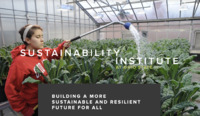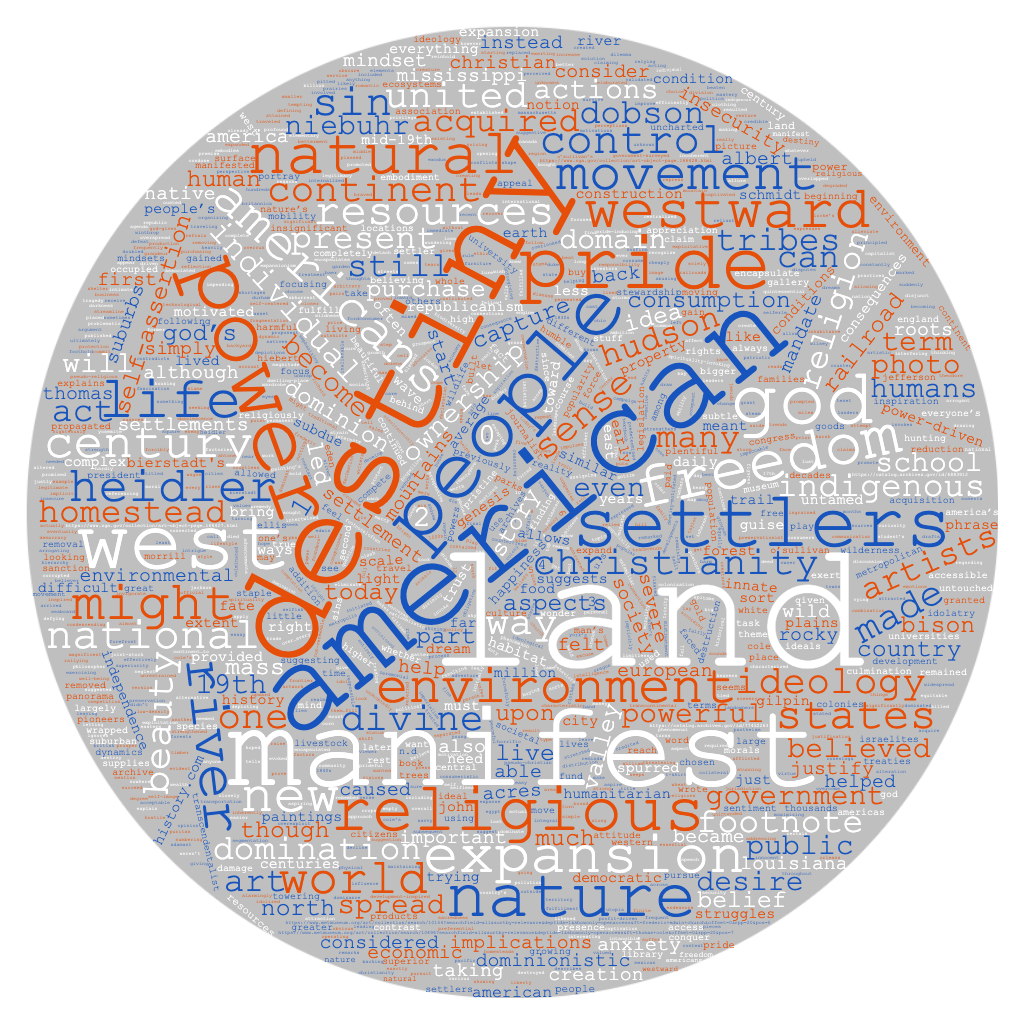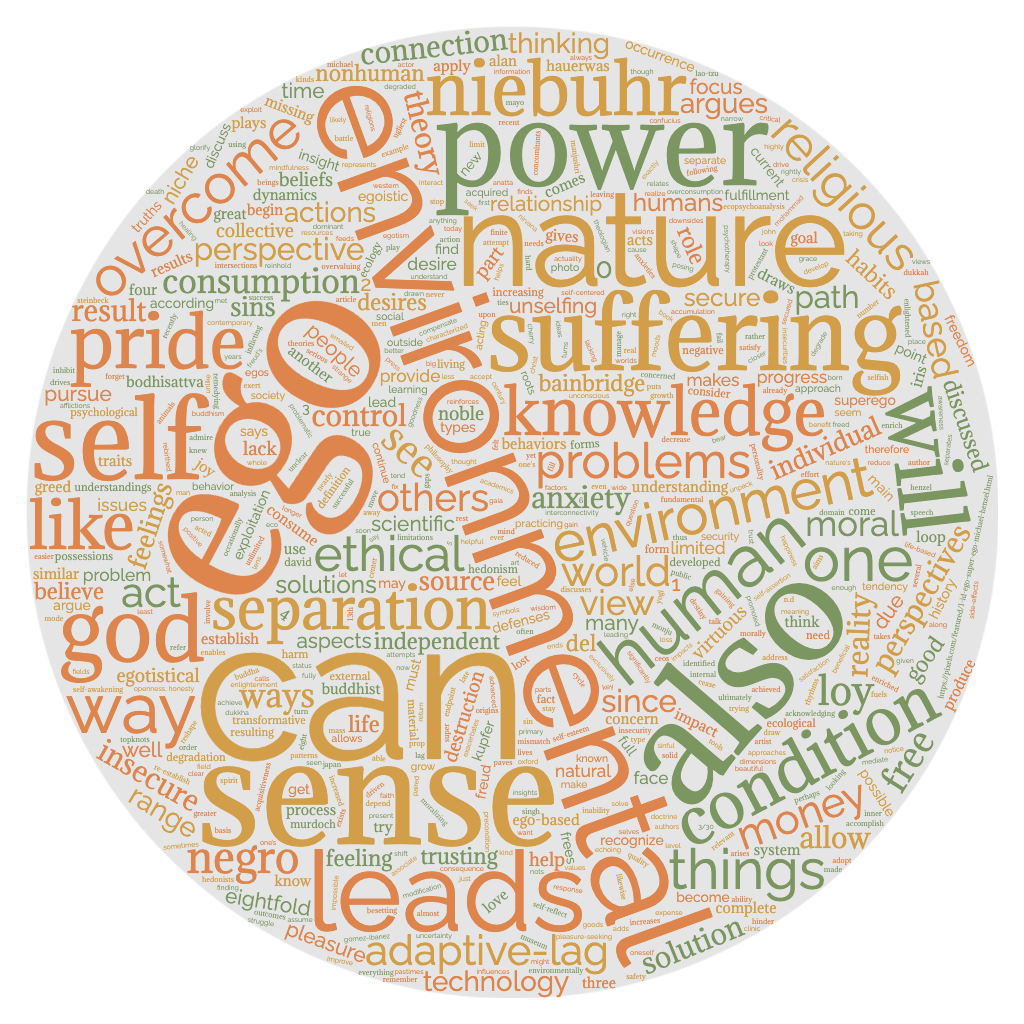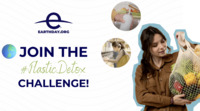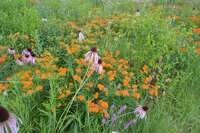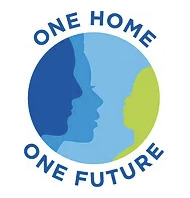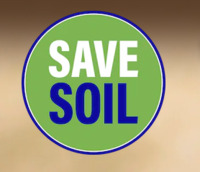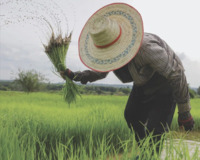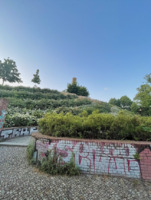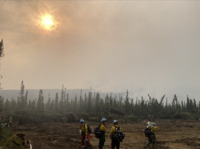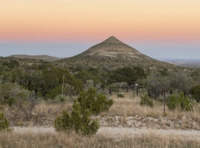Search
103 items
-
Sustainability Institute at Ohio State
"The Sustainability Institute collaborates with academic and operations units across the university to advance sustainability and resilience scholarship and activities. We aim to establish Ohio State as a leader in sustainability research and applications; educate and empower students; accelerate campus sustainability and living lab opportunities; grow resources to support these efforts; and catalyze a culture of sustainability." -
Household Carbon Footprint Calculator
This interactive resource allows the user to input information on their housing situation and energy usage to calculate their estimated carbon footprint. It can show you where the most waste is and any possible ways to reduce the carbon footprint. -
Manifest Destiny: The American Dream or an Ecological Crisis?
This chapter from the student-written book "Emerging Perspectives on Religion and Environmental Values in America" explores the history of colonial expansion and the concept of manifest destiny in the US. It examines the environmental impacts as well as the religious motivations behind this course of action. Below is the first paragraph of the chapter to introduce the discussion.
"A quintessential part of the “American dream” is freedom. Whether it be freedom of religion, freedom of speech, or simply freedom to pursue one’s own dreams, Americans have always idolized the United States as a sort of utopia for individual freedom. 'Manifest destiny' is a mindset that embodies this belief. A staple term in every elementary, middle, and high school student’s American history textbook, it might be considered the epitome of what it meant to be American at the start of American imperialism. The idea of manifest destiny gained popularity in the mid-19th century and was built upon the notion of freedom. Advocates for manifest destiny believed that Americans were free, even bound by fate, to conquer the North American continent and expand the realm of democratic republicanism and Christianity. Under the guise of religious, political, and economic motivations, manifest destiny allowed Americans to pursue the 'American dream' and subdue the 'wild west.' The environmental and humanitarian implications of manifest destiny were frequently overlooked or not considered, resulting in ideology that still today seeps into our behaviors and perceptions regarding domination and superiority." -
Planet vs. Plastics
"For Earth Day 2024, EARTHDAY.ORG is unwavering in our commitment to end plastics for the sake of human and planetary health, demanding a 60% reduction in the production of ALL plastics by 2040." -
SEEDS Sustainability Library
"The SEEDS Sustainability Library is a comprehensive repository of applied student research and knowledge that includes a diverse range of interdisciplinary, student-led research projects that have used the Campus as a Living Lab. These open access applied research reports contribute to a body of knowledge, learning and action to ignite sustainability ideas, policies and practices, enabling the broader community to learn, apply and build on previous research." -
The Consequences of the Ego and the Potential of Unselfing
This chapter from the student-written book “Emerging Perspectives on Religion and Environmental Values in America” explores consumption, human ego, and the relationship between these and our environment. It discusses human nature and how we interact with each other, technology, and nature. Below is the first paragraph of the chapter to introduce the discussion.
"Consumption is one of the favorite pastimes of our developed society, but it is also the source of many environmental problems. As technology has advanced, our society and economy have developed into one dependent on the mass consumption of things. Our habits of mass consumption have acted as a vehicle of destruction by increasing the amount of resources we use and waste we produce, leaving parts of our environment severely degraded. As a result, the people who have more and seem to be successful make more environmental impact, while the environmental consequences of their actions tend to be felt by the have nots. Our symbols of success that we prop up seem to be part of the problem as they have serious environmental downsides, and even though we recognize these downsides we continue to glorify consumptive habits that are destructive. But have you ever considered the roots of our need to consume?" -
President Carter’s Environmental Roots
This chapter from the student-written book “Emerging Perspectives on Religion and Environmental Values in America” explores the environmental history and values of former President Carter. It discusses how Carter's religion impacted his environmental views and how he acted on those values during his career. Below is the first paragraph of the chapter to introduce the discussion.
"Former President Carter, the peanut farmer turned president, has a long and well-known record. He’s been everything from a farmer, navy man, state senator, then Governor of Georgia, President of the United States, Noble Peace Prize winner, and bible study teacher. What’s not as recognized as his noble peace prize winning post-presidency, or his political career, is his strong environmental policies. In his 4 years in the White House, President Carter did more for the environment than many presidents before and after him. He faced many challenges throughout his presidency, most notably the hostage crisis, and the energy crisis. These major challenges in his tenure have hogged much of the attention of his presidency, and people seem to forget his message of good environmental attitudes. The question is, where did his environmental attitudes come from?" -
An Unfamiliar Outlook: The Partnership of Ecofeminism and Daoism
This chapter from the student-written book “Emerging Perspectives on Religion and Environmental Values in America” explores the interactions between Daoism and environmentalism, feminism and environmentalism, and Daoism and feminism. The history of these philosophies are explored and the author includes her own experiences and thoughts to help discuss the perspective. Below is the first paragraph of the chapter to introduce the discussion.
"It’s not clear how many Daoist ecofeminists are in the world, but I think I may be one of them. Though I was raised as a Baptist Christian, I have found the insights of Daoism, the predominant religion of the homeland of my family, and ecofeminism, the perspective that centers women’s relationship to nature, as complementary to my Christian faith and concern for the environment. I have been able to incorporate this philosophy into my life and found that they are interrelated. My interest in these thoughts was partly sparked by applying to the China Program summer internship with Environmental Defense Fund (EDF), which piqued my interest in learning more about Chinese cultural beliefs. Daoism has played a huge role as a philosophy within Chinese culture for thousands of years, and I am interested in ecofeminism because it is a topic that strongly resonates with me being a woman and its relation to the earth. As someone who grew up having a spiritual and personal relationship with the natural world, I find that many of my values align with the Daoist ecofeminist perspective." -
Earth Friendly Habits: Putting Your Catholic Faith into Action
"We all want to have clean air and water. We all want to leave a healthy planet for our children and grandchildren but the challenges we face can feel overwhelming. This booklet will guide us in the process of creating earth friendly habits. Every week it will feature a quote from a saint, Pope Francis, or Laudato Si’, the encyclical written by Pope Francis, along with a simple idea to consider implementing. Often, there will be information about why we need these changes. Some ideas will be familiar but are worth revisiting. Some will be new. The suggestions might appear small but once enough people act in their own lives, it will start a chain reaction that can only end in a healthier planet Earth. Many of the ideas cost nothing. Some require a small initial investment but will save money in the long run. These steps can improve the environment over the course of a lifetime. Spend some time each week thinking about implementing the suggestion. Learn and adopt strategies that work for you." -
#PlasticDetox Social Media Challenge
"Join the EARTHDAY.ORG #PlasticDetox challenge and reduce your plastic use! Take small steps to avoid single-use plastics like bags, straws, bottles, and packaging. Share your eco-friendly swaps and inspire others to join the movement on social media using #PlasticDetox.
The challenge not only focuses on individual actions but also encourages participants to spread awareness and inspire others to join the movement. By collectively engaging in the EARTHDAY.ORG #PlasticDetox challenge, participants will create a ripple effect and encourage a wider shift towards a plastic-free lifestyle. Together, we can make a big impact for a plastic-free future!" -
In Minnesota they’re paying homeowners to replace lawns with bee-friendly wild flowers
"Minnesota lawmakers set aside $900K to assist homeowners convert traditional lawns by planting wildflowers, clover and native grasses in an effort to slow the collapse of the state’s bee population." -
USCCB Expresses Gratitude for Restoration of Regulatory Provisions for National Environmental Policy Act
The United States Government approved a rule that added regulations for NEPA and the United Conference of Catholic Bishops supports this change. The reason for the support is that they believe NEPA is vital for ecological and societal safety. -
Religion and Environment Photo
This image was taken in Westerville, OH. While going on a walk I ran into this spot and thought it was nice how so much nature is [near]by and we live urban area. That image meant a lot because it['s] often a place I enjoy going and every year during Earth Day the community gathers and cleans up and [tries] to look out for the earth. -
Laudato Si' Discussion Guide
"Pope Francis’ encyclical letter Laudato Si’ was released in June 2015. Five years later, in 2020, Pope Francis invited all Catholics and people of good will to celebrate the fifth year anniversary of this important encyclical and to take action to better care for our common home. Also in 2020, Pope Francis issued an apostolic exhortation, Querida Amazonia [Beloved Amazon], which drew heavily from Laudato Si’ and from the reflections of participants in the Special Synod of Bishops for the Pan-Amazonian Region on October 6-27, 2019 on topics such as “the cry of the poor,” exploitation of the resources and the original peoples of the Amazon region, and action to care for God’s creation. The guide includes materials for prayer, reflection and discussion, as well as ideas to help Catholics respond to Pope Francis’ call in Laudato Si’. The discussion section of the guide includes quotes and discussion questions on a variety of themes highlighted in Laudato Si’. The facilitator should decide in advance which topics will be covered during this session. Given the number of rich themes on which Pope Francis focuses in Laudato Si’, you may wish to spread the topics among several sessions. A separate study guide for Querida Amazonia is also available." -
One Home One Future Launch Event — Oct. 4, 2023
"Join us for this 1-hour launch event — One Home One Future is a multifaith campaign to strengthen vitality, relevance, and community connection across generations in local congregations nationwide. It is a coalition effort of American faith denominations and organizations working for visible and collective climate action by faith leaders. The campaign will educate, activate, and empower clergy, congregants, youth, and all spiritual people in meaningful and just solutions locally, regionally, and nationally in ways that are accessible, positive, and empowering.
To officially participate in the campaign, visit OneHomeOneFuture.org" -
Laudato Si' for Children
This video is an animated synopsis of Pope Francis' Laudato Si'. It was made to be consumed and understood by children as an introduction to faith and environment. -
Save Soil
This resource details a campaign to improve soil practices to be more sustainable through building up consciousness. The leader of this movement is Sadhguru, a spiritual leader. Sadhguru advocates for connecting inner spiritual processes to an affinity for nature. This is an international organization that started in Tamil Nadu, India. -
Roots for Change
"'Roots for Change' is the culmination of a multi-year process in which CEE conducted research, hosted grassroots dialogues, and organized high-level consultations with communities across the globe. This initiative engaged diverse groups—including religious, spiritual and Indigenous communities—in conversations with UN partners, advocacy organizations and local government officials. By highlighting the ways cultural and spiritual traditions support and sustain ecosystem restoration projects, these consultations informed the 10 principles. ..." -
Modernity Today
"This photo, taken in Berlin Germany, combines two aspects of modernity today. As depicted, this is a piece contrasting the natural and the industrial aspects of this city. This was a unique site to see, as this mound used to be a garbage field, but was turned into one of Berlins most notable parks." Taken by Lydianna Trudel. Submitted to the RESTORExchange Sustainability Photo Contest. -
Wildland Firefighting
"The photograph shows my crew on the Lost Horse Creek Fire outside of Fairbanks, AK. Wildland Firefighting was an incredibly unique way for me to connect with nature and challenge myself. Fighting this particular fire protected the rural communities residing in the area which tremendously touched when I interacted with them firsthand. They showered us with food and gifts. This was practicing sustainability values in my own way." Taken by Kelsey Wolf. Submitted to the Sustainability Photo Contest. -
Moving Goal
"Sustainability is a moving goal; requiring humans to be agile and intuitive to achieve sustainability and build resiliency." Taken by Kenedy Witherow. Submitted to the RESTORExchange Sustainability Contest. -
Repurposing Metal
"Repurposing metal into art probably won’t save the world but this piece at the Edison and Ford Museum in Fort Myers, Florida depicts history in a fun and amusing way." Taken by Ann Hitzhusen. Submitted to the RESTORExchange Sustainability Photo Contest. -
Sustainable Fashion
"Sustainable fashion helps directly saves fabric scraps from adding to the textile pollution issue and reduces further production needs and therefore waste." Taken by Sophia Kortan. Submitted to the RESTORExchange Sustainability Photo Contest. -
Mural Oasis
"This image depicts only a small portion of Primm Mall located just outside of Las Vegas. Due to economic challenges and other business-related struggles, almost all of the shops that originally occupied the building have closed, leaving only a handful of businesses open. As Primm Mall became more and more abandoned, the building owners chose to do something remarkably sustainable. Rather than closing the mall and tearing down the building, they turned the structure into an artistic experience. Primm Mall now stands as an impressive gallery of street-style murals visited by thousands every year. The unique Mural Oasis created within the mall is a wonderful representation of how the built environment can be sustainably repurposed." Taken by Kelsey Frantz. Submitted to the RESTORExchange Sustainability Photo Contest. -
Preserving a Beautiful World
"Preserving a beautiful world". Taken by David Farrokh. Submitted to the RESTORExchange Sustainability Photo Contest.

